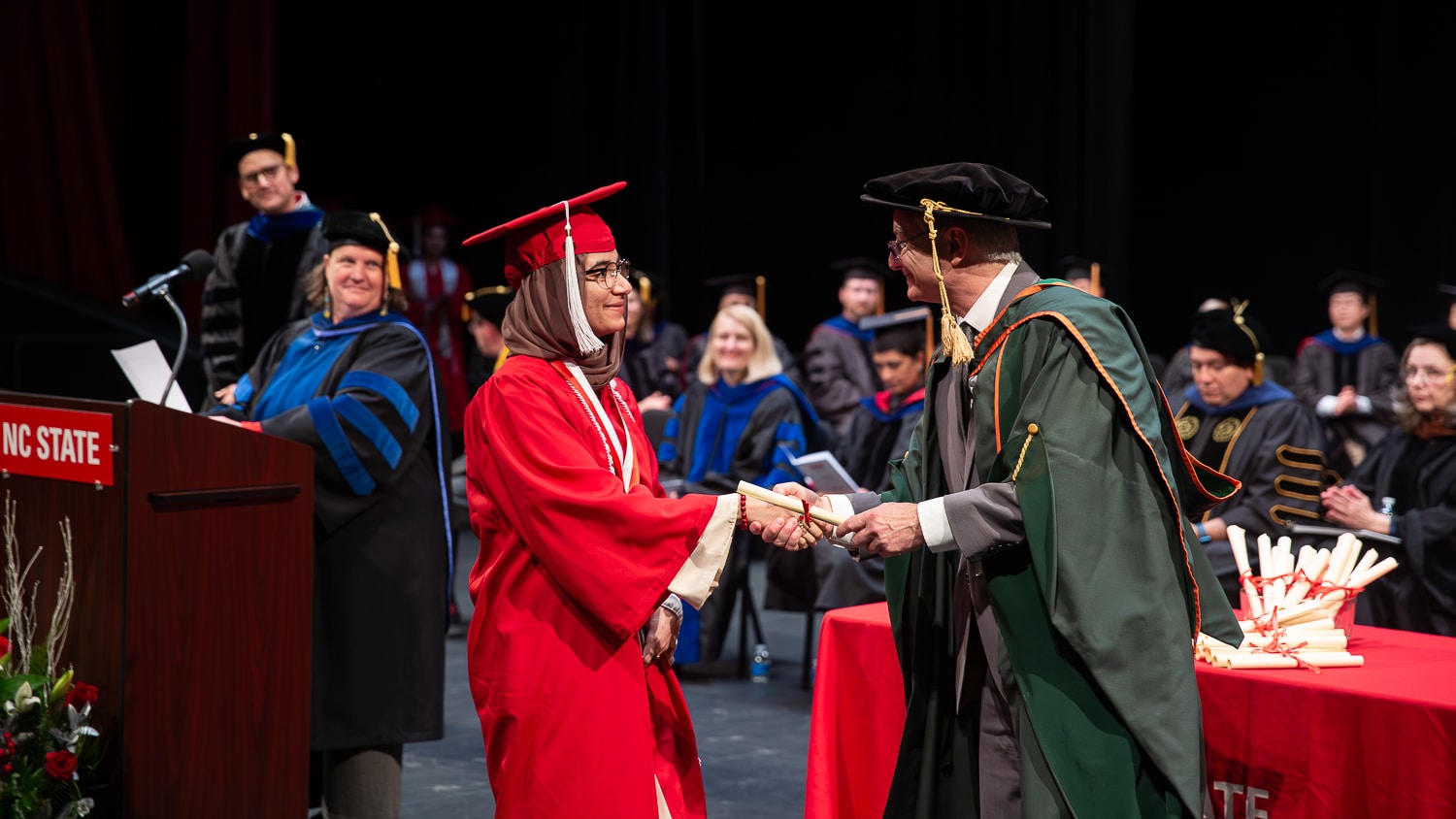Understanding and Applying: Project Challenges Students to Develop Apparel Line

By Sarah Stone
The last time you bought clothes from H&M, Gap or another national brand, did you think about how the apparel line came to be? It takes a whole team of product development and brand marketing professionals to develop the concept for that line and transform it from idea to sold product.
Senior fashion and textile management (FTM) students at the Wilson College of Textiles immerse themselves in that process for their final project for FTM 416: The Fashion Industry. All FTM seniors are required to take the capstone course, which provides a unique opportunity for students from both the brand management and marketing (BMM) and fashion development and product management (FDPM) concentrations to collaborate.
“Students were consistently telling me that they really wanted to be on a team that consisted of students from the two different concentrations and where they could leverage their specific skills,” Professor Kristin Thoney-Barletta says.
Teams of six students from both concentrations are assigned to target markets ranging from toddlers to baby boomers. After choosing a national brand for that target market, each group is tasked with developing an apparel line concept for a specific season by:
- Researching style, color and fabric trends for the target market.
- Researching the demographics for the target market.
- Setting a price point for garments in the line.
- Using computer-aided design (CAD) to design at least one outfit for the line based on the above research.
- Drafting a marketing plan, including mock advertisements and social media posts.
- Generating a sourcing analysis comparing two supply chains.

“I think we all learned from it because I’ve never had a project where you actually had to create the garment or do the fashion research like that before,” BMM student Hannah Stoltz says.
The team Stoltz was a part of developed an apparel line for Carter’s*. Their assigned target market, toddlers, presented a unique challenge.

“They’re not the one actually buying their garments or like buying their clothing. I’ve never had a kid and I’ve never had to think about that before. So it was a whole new ballgame to think about. So whenever you’re buying children’s clothes, you actually have to be targeting the parents or people who are buying the garment for them.”
This meant that the students had to study demographic information about millennial mothers as well. Students say this challenge was part of a larger benefit of the project.
“We learn all these things and then we have our tests and we think we know material,” BMM student Mary Blair Salati says. “And you don’t truly know the material until you are applying it or, you know, fully engulfed in it.”
Salati can vouch for the level of real-world application of the project. Her father works as a textiles sourcing agent.
“After we were done, I showed him our project,” she says. And he was like, ‘Wow, this is really great that you guys incorporated all of these things. I would have definitely made the same sourcing choices.’”
She says developing the apparel line in this in-depth manner gave her a more holistic understanding of how the procedure works.
“You really walk through the whole entire process of making these strong recommendations for companies,” Salati says. “And so it really taught me the whole entire process from the very beginning.”
Dr. Thoney-Barletta says it’s this well-rounded knowledge and the experience applying it that provides Wilson College students with a leg up in the job market.
“My belief is that people that move up faster in corporations are those that not only really understand their area, but they also understand how their area interacts with other areas of the company.”
*Note: This is a theoretical project only. Students did not partner with the company mentioned in this article.
- Categories:


